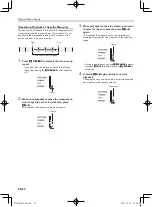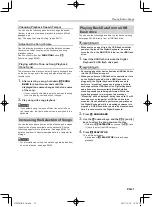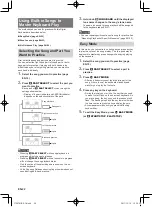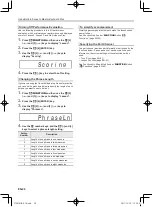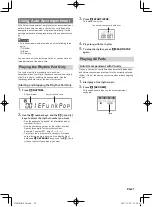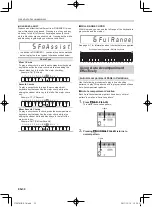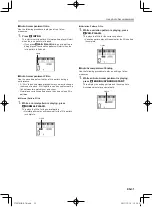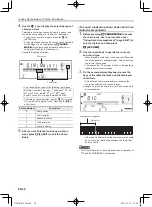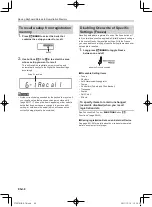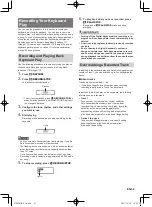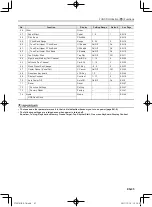
Using Auto Accompaniment
EN-30
●
FINGERED ASSIST
Produces an effect that is different from FINGERED 1 when
two or three keys are pressed. Pressing a root key and any
white key to the left of the root key plays a seventh chord,
while a black key plays a minor chord. Pressing both a white
and black key together plays a minor seventh chord.
• In addition to FINGERED 1, you can also use the methods
below to play the three types of chords described below.
■
FULL RANGE CHORD
With this mode, you can use the full range of the keyboard to
play chords and the melody.
See page A-7 for information about chords that are supported.
Use the following procedures to play intro and ending
patterns, to play fill-in patterns, and to play variations of basic
Auto Accompaniment patterns.
■
Auto Accompaniment Variation
Each Auto Accompaniment pattern has a basic “normal
pattern” as well as a “variation pattern”.
1.
Press
5
VAR.
FILL-IN
.
This starts the variation pattern.
2.
Pressing
4
NORMAL
FILL-IN
returns to
normal pattern.
Chord Type
Minor Chords
To play a minor chord, press the accompaniment keyboard
key that specifies the major chord, while also adding the
closest black key to the left of the major chord key.
Example:
Cm (C Minor)
Seventh Chords
To play a seventh chord, press the accompaniment
keyboard key that specifies the major chord, while also
adding the closest white key to the left of the major chord
key.
Example:
C7 (C Seventh)
Minor Seventh Chords
To play a minor seventh chord, press the accompaniment
keyboard key that specifies the major chord, while also
adding the closest white and black keys to the left of the
major chord key.
Example:
Cm7 (C Minor Seventh)
F
g
A s s i s t
A
C C DE
F F
#
E
#
G
A
B
B
C C DE
F
E
#
A
C C DE
F F
#
E
#
G
A
B
B
C C DE
F
E
#
A
C C DE
F F
#
E
#
G
A
B
B
C C DE
F
E
#
Using Auto Accompaniment
Effectively
Auto Accompaniment Pattern Variations
F u l R a n
g
e
Accompaniment keyboard / Melody keyboard
Lights
Lights
CTX870IN-E-1A.indd 32
2017/12/18 15:24:57





